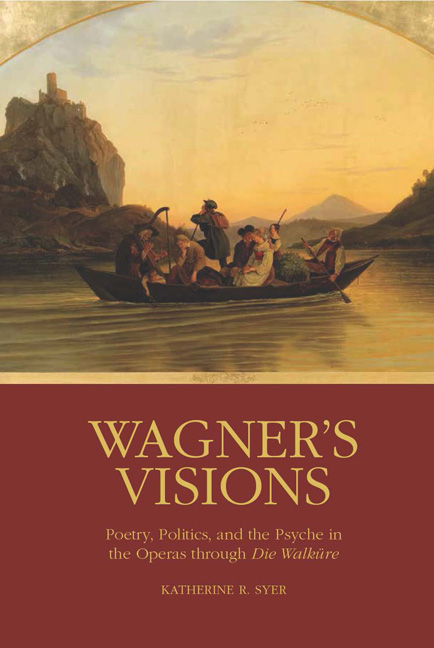4 - Opposing Worlds: Tannhäuser and Lohengrin
Published online by Cambridge University Press: 05 November 2014
Summary
With Tannhäuser and Elsa, Wagner continued to craft dramatic characters that are sometimes psychologically remote—somewhere other than here in the drama. As entryways into their respective operas they both recount dreams presaging solutions to their respective challenges. The power of unconscious mentation as a shaper of these dramas is not to be underestimated. Tannhäuser manages to resist Venus's efforts to keep him in her rose-hued grotto where time, to his frustration, stands still. A lightning-fast scene change then takes us to the sun-drenched verdant Wartburg Valley under a bright blue sky. The sound of distant bells completes the picture of the yearned-for home that he had described to Venus just moments before. Lohengrin's arrival in Brabant is a more protracted and suspenseful process, but also involves the juxtaposition of a supernatural world with an earthly one. We are not privy to a visual glimpse of the Grail realm from which he comes. The opera's prelude nevertheless unforgettably evokes an otherworldly dimension from its first chords, before that music becomes associated with the knight's journey later in the first act. The prelude already suggests a narrative of embodiment. Once its initial nebulous musical idea becomes more tangible, however, it returns to the rarefied atmosphere with which it began, just as Elsa's envisioned knight will also ultimately prove ungraspable.
- Type
- Chapter
- Information
- Wagner's VisionsPoetry, Politics, and the Psyche in the Operas through 'Die Walküre', pp. 118 - 155Publisher: Boydell & BrewerPrint publication year: 2014



